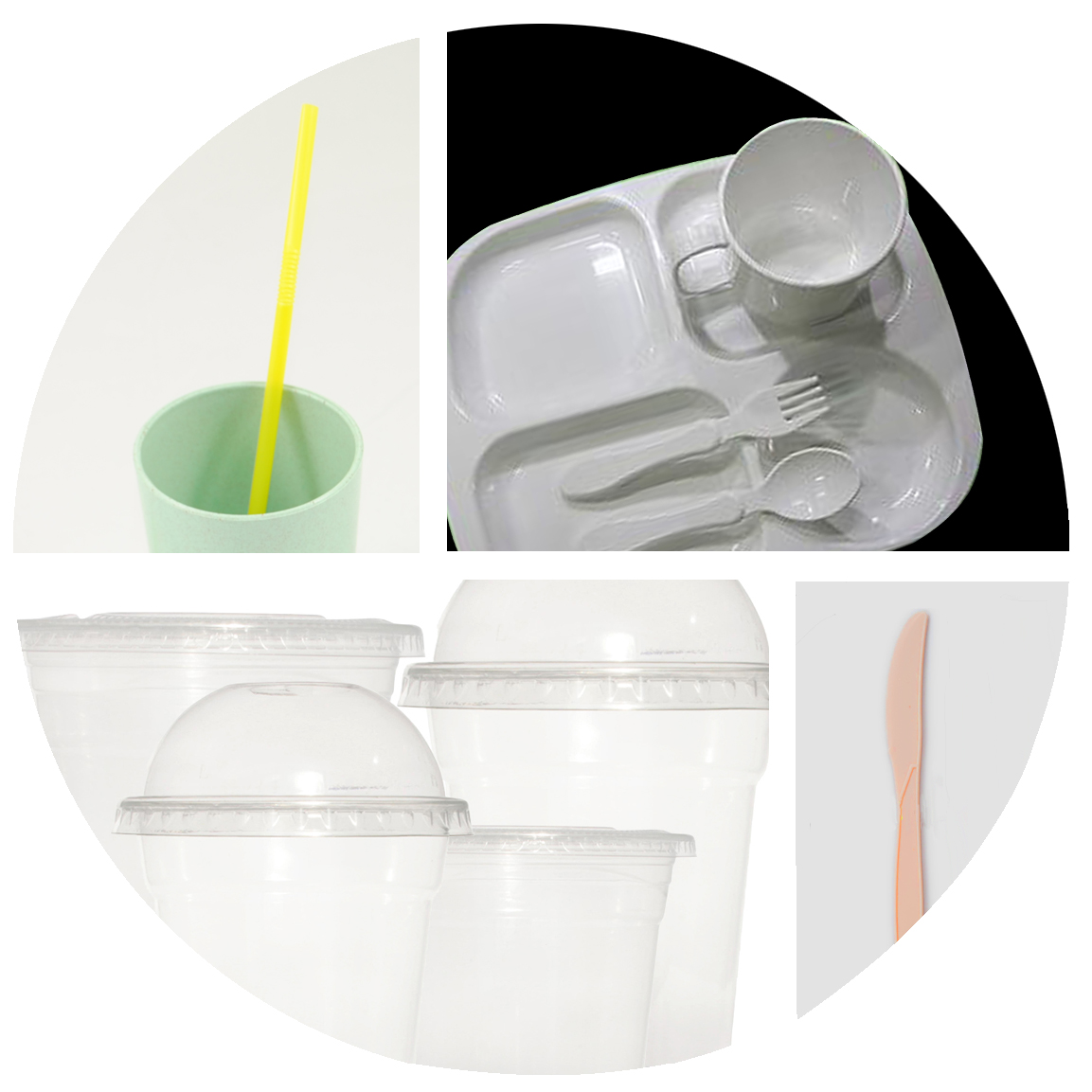PLA
Polyester that is derived from renewable sourcesPLA – Polylactic Acid or Polyactide
PLA is a comparatively cost-effective material to produce, and these benefits can necessarily be passed along to the consumer. Machinery designed for petrochemical plastics can be used to manufacture it, plus it’s robust enough to have a long lifespan in applications such as electronics.
Versatility is a core element of PLA’s appeal. It can be processed in various ways including through thermoforming, casting and fibre spinning and various colours can be produced. End products include tableware, food packaging, drinking straws and clear cups that can be used in offices and other single-use locations. PLA is also still used widely in the medical sector, including their innovative use in implants such as pins that will naturally break down within the body in up to 2 years, therefore eliminating the need for further surgery to remove the corrective implant. It simply degrades into non-toxic lactic within the body. Further work is already underway to improve the permeability and low melting temperature of PLA which currently impacts its use in some industry.
PLA products will compost within 6 months when sent to a commercial composting facility. In smaller compost facilities at home, for example, it may take longer, but it’s a fraction of the hundreds of years it takes for traditional plastics to decompose when sent to landfill. This makes PLA the ideal material for developing single-use items and those with relatively short lifespans.

Plastics like PLA that are from renewable sources are known as bioplastics
Derived from natural sources, it is also home compostable, further adding to its eco-friendly credentials.
Derived from renewable sources
PLA is a cost-effective material
Versatility of PLA
Perfect for tableware & food packaging
Eco testimonial title
Fusce sagittis urna sit. aliquam.
Fusce vestibulum magna sit amet nunc ultrices aliquam. Integer tristique nulla a ornare porta. Fusce sagittis urna sit amet nisi efficitur aliquam. Nullam lectus dui, malesuada vel nisi mattis, lobortis mollis elit.
Fusce sagittis urna sit. aliquam.




